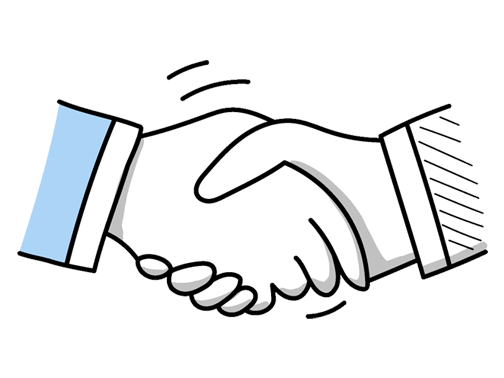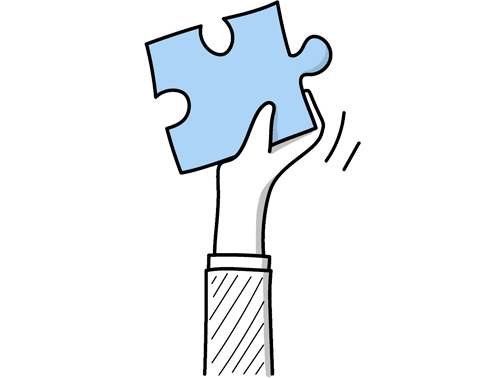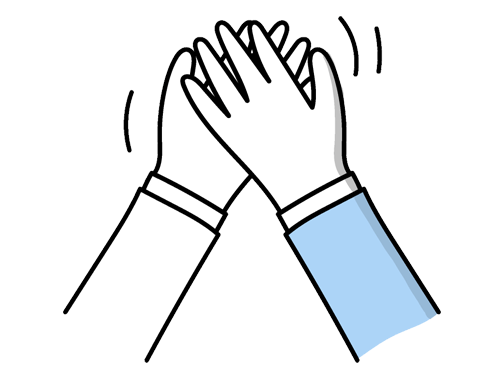Art Therapist Interview Questions (2025 Guide)
Find out common Art Therapist questions, how to answer, and tips for your next job interview
Practice Interviews Online - Identify your strengths and weakness in a realistic Art Therapist mock interview, under 10 minutes
Practice Now »Art Therapist Interview Questions
What they want to understand is how you use creativity to engage clients and facilitate healing. You need to say that creativity is central to your approach because it helps clients express emotions non-verbally and fosters personal insight.
Example: Creativity is central to my approach as it opens up new ways for clients to express feelings they might struggle to put into words. For example, using painting or collage allows emotions to surface without pressure. It’s less about the art itself and more about the process, helping clients explore their inner world in a safe, non-verbal space where healing can begin naturally.
This interview question helps the interviewer understand your motivation and connection to the field, showing that you’re genuinely committed and aware of the impact art therapy can have. In your answer, briefly share a personal experience that sparked your interest in art therapy and explain how you believe it supports emotional healing and mental well-being.
Example: My interest in art therapy grew from seeing how creative expression helped a close friend navigate trauma when words weren’t enough. I’ve come to appreciate how art can open emotional doors and promote healing. Being able to support individuals in that journey feels meaningful, and I’m committed to using art as a way to foster understanding and resilience in those facing challenges.
This interview question assesses your commitment to ethical practice and ongoing professional growth. You need to say that you regularly review updates from professional art therapy organizations and apply these ethical standards in your work, such as maintaining client confidentiality, while also participating in peer discussions or supervision to deepen your ethical understanding.
Example: I regularly review updates from professional bodies like the British Association of Art Therapists and attend workshops to deepen my understanding of ethical practice. In sessions, I stay mindful of confidentiality and informed consent, ensuring clients feel safe. I also discuss challenging cases with colleagues to gain perspective and maintain high standards. Staying engaged this way helps me provide ethical, client-centered care consistently.
Questions like this help interviewers understand your practical skills and how you apply therapeutic techniques through art. You need to briefly describe your relevant roles and highlight specific examples where your work made a positive impact on clients.
Example: In my previous role, I worked with diverse clients, helping them explore emotions through creative expression. One memorable experience was supporting a young adult with anxiety, where using art allowed them to communicate feelings they struggled to verbalise. This hands-on approach not only fostered healing but also built trust, which I find essential in therapy. I value creating a safe space where art becomes a bridge to understanding and growth.
What they want to know is how your diverse experiences have prepared you to adapt and apply art therapy in various environments. You should briefly describe the different settings you've worked in, your key responsibilities, and how these experiences have influenced your therapeutic approach to meet clients' unique needs.
Example: I’ve worked in a range of settings, from NHS mental health units to community centres supporting vulnerable adults. In hospitals, I focused on helping patients process trauma through creative expression, while in community groups I facilitated inclusive workshops promoting wellbeing. These experiences taught me to adapt my approach to different needs, blending structure with flexibility to foster a safe, supportive space for healing and personal growth.
Hiring managers ask this question to ensure you understand the importance of protecting both your well-being and the client’s, maintaining a safe therapeutic environment. You need to explain how you set clear limits, recognize and address boundary issues ethically, and commit to continuous self-reflection and training in professional ethics.
Example: In my practice, I make sure to set clear expectations from the start, explaining what’s appropriate in our sessions. If any tricky situations arise, I stay mindful and address them openly to protect the therapeutic space. I also regularly reflect on my own responses and seek supervision to grow professionally. For example, I once navigated a client’s request for social media connection by gently reinforcing our boundaries while maintaining trust.
Interviewers ask this to see your genuine passion and understanding of how art therapy aids emotional healing. You need to express how helping clients achieve emotional progress through creative expression fulfills you and highlight your commitment to empathetic, client-centered care.
Example: What I find most rewarding is witnessing someone unlock emotions or insights through their artwork that words alone might not reveal. It’s powerful to support people as they explore their feelings creatively, often gaining new perspectives or healing in the process. Being part of that journey, tailoring support to each individual’s needs with empathy, really brings meaning to the work and reminds me why this role matters so much.
What they want to understand is how you approach difficult situations and adapt your therapy methods effectively. In your answer, clearly describe the challenges you faced, the specific art therapy strategies you used to help the client, and the positive results you achieved along with your key takeaways.
Example: In one case, I worked with a young client struggling to express trauma. I noticed their resistance during sessions and introduced creative, non-verbal techniques like clay modeling to build trust. Over time, they opened up more comfortably, which helped in their healing process. This taught me the importance of flexibility and patience in therapy, tailoring approaches to meet individual needs rather than following a set plan.
This interview question helps employers understand how you evaluate the effectiveness of your therapy and ensure clients are benefiting. You need to explain that you track observable changes in artwork and use specific tools like assessments or journals to measure progress, while adjusting your approach based on the client’s goals and responsiveness.
Example: I track progress by observing shifts in a client’s artwork and emotional expression over time, noting changes in themes, colors, or complexity. I also use reflective discussions to understand their feelings and insights. Sometimes, I incorporate goal-setting together, adjusting techniques to support where they are emotionally, ensuring the therapy stays relevant and responsive to their personal journey.
Hiring managers ask this question to see how you handle challenges and build trust with clients who are hesitant about therapy. You should explain that you use active listening to validate their feelings, adapt art materials to their preferences, and explore the reasons behind their resistance to better support them.
Example: When working with clients who seem hesitant, I focus on creating a safe, non-judgmental space where they feel heard and respected. I adapt my approach—sometimes using creative art activities that allow expression without pressure. I also try to understand the reasons behind their resistance, whether it’s fear or uncertainty, and gently explore these feelings to help build trust and open pathways for collaboration.
This question helps interviewers understand how you stay inspired and use your creativity to benefit your clients. You need to explain your personal routines like working on your own art and how your passion positively impacts your therapy, plus mention ways you handle creative challenges such as taking classes or workshops.
Example: I stay inspired by regularly exploring new techniques and engaging with different art forms, which keeps my creativity fresh. When I hit a block, I might take a break or reflect through journaling. My passion for art deeply influences my work, allowing me to empathise with clients and offer meaningful guidance. It’s this ongoing personal connection to art that fuels both my practice and my own creative growth.
Questions like this assess your understanding of ethical standards and trust-building in therapy. You need to say that you strictly follow confidentiality laws and create a safe space by clearly explaining privacy limits to your clients.
Example: I make sure to create a safe space where clients feel comfortable sharing, always explaining how their information is protected. I follow strict guidelines about what stays between us, only breaking confidentiality if there’s a risk of harm. For example, if a client shares something worrying, I discuss next steps with them while respecting their trust. This balance helps build a strong, respectful therapeutic relationship.
Employers ask this question to see if you are committed to ongoing learning and staying updated with the latest practices and research in art therapy. You should say you regularly attend workshops and conferences, engage with professional communities, and keep up with current journals and publications in the field.
Example: I make a point of regularly attending workshops and conferences to deepen my understanding and connect with other professionals. I’m also subscribed to key journals and follow recent studies to stay informed about new approaches. Being part of local and online art therapy groups helps me share insights and learn from real-world experiences, which keeps my practice fresh and responsive to current developments.
Interviewers ask this question to see how flexible and creative you are in tailoring therapy to clients' needs. You need to explain that you assess each client's preferences and goals to choose appropriate mediums, blending techniques to enhance emotional expression and healing.
Example: In my sessions, I choose mediums that best suit each client’s needs and comfort levels. Sometimes we start with drawing to express immediate emotions, then move to clay for a more tactile experience, helping clients connect physically with their feelings. Mixing materials like collage and paint can also unlock new perspectives, allowing creativity to emerge naturally while supporting emotional exploration and healing.
Employers ask this to see if you can create trust and a safe space, which is crucial for effective therapy. You need to say that you listen actively, show empathy, and use creative techniques to connect with clients personally and respectfully.
Example: Building rapport starts with creating a safe, non-judgmental space where clients feel heard and respected. I pay close attention to their comfort and pace, often using art as a gentle way to open communication. For example, I might begin by exploring a simple drawing together, which naturally helps build trust and encourages honesty over time. This approach helps clients feel truly seen and supported.
Hiring managers ask this to see if you understand core therapeutic methods and can apply them creatively. You need to mention approaches like client-centered therapy or mindfulness through art, explaining how they help clients express emotions and facilitate healing.
Example: In my experience, the most effective techniques are those that encourage clients to express emotions visually, like free drawing or collage-making. These methods often help people access feelings they struggle to verbalize. For example, a client once used mixed media to explore trauma, which opened pathways for meaningful conversation and healing. The key is adapting the approach to each individual’s needs, allowing art to gently guide their emotional journey.
What they want to know is that you prioritize creating a trusting environment where clients feel comfortable expressing themselves. You need to say that you establish clear boundaries, practice active listening, and tailor your approach to each client’s needs to foster safety and support.
Example: I focus on creating a warm, non-judgmental space where clients feel heard and respected. I pay close attention to their comfort levels, encouraging them to express themselves at their own pace. For example, if a client seems hesitant, I might offer alternative ways to engage, like drawing or quiet reflection, ensuring they always feel in control and supported throughout the session.
Questions like this assess your ability to navigate complex situations while maintaining professional integrity. You need to explain that you prioritize client confidentiality, seek supervision or consultation when unsure, and adhere to ethical guidelines to make thoughtful, responsible decisions.
Example: When faced with ethical dilemmas in art therapy, I focus on open communication, respecting client confidentiality, and consulting with colleagues or supervisors when needed. For example, if a client creates distressing imagery, I’d gently explore their feelings while maintaining boundaries and ensuring their well-being. It’s about balancing empathy with professional responsibility, always keeping the client’s best interests at heart.
This interview question aims to understand how you use art as a tool to evaluate a client's emotional and psychological state. You need to explain that you observe the client's artwork for themes, colors, and expressions to gain insights, and then combine this with conversation to tailor your therapeutic approach.
Example: When assessing a client’s needs through art, I observe not just the final piece but the creative process itself—choices of colour, form, and rhythm all reveal inner thoughts. For example, a client’s use of dark shades might hint at underlying emotions. I also encourage dialogue about their work, which often uncovers feelings that words alone don’t express, helping me tailor support that truly resonates with their experience.
What they want to understand is how you handle challenging situations with empathy and professionalism. You need to explain the situation briefly, how you remained calm and used your skills to support the client effectively.
Example: In one session, a client was visibly upset and resistant to engaging. I listened attentively, allowing space for their feelings without pressure. Gradually, through gentle prompts and validating their emotions, they began to express themselves more openly. This patience helped build trust, turning a challenging moment into a breakthrough that deepened our therapeutic connection.
Hiring managers ask this question to see if you have a clear plan for your growth and how your personal values align with the field. You need to explain your goals to specialize or contribute to art therapy and why helping clients this way matters deeply to you.
Example: In the long term, I hope to deepen my skills and broaden the ways art therapy supports mental health, especially in community settings. I’m motivated by how creative expression can help people find healing and understanding. Ultimately, I want to contribute to making art therapy more accessible and valued within healthcare, perhaps by collaborating with other professionals or developing tailored programmes that meet diverse needs.
What they want to understand is your experience and comfort level with different client groups, showing your ability to adapt therapy to diverse needs. You need to clearly identify the populations you've worked with and briefly mention how that experience informs your approach.
Example: Throughout my career, I've supported diverse groups—children managing emotional challenges, adults recovering from trauma, and older adults facing isolation. Working with young carers, for example, taught me the importance of creating a safe space for expression. Each experience has shaped my approach to therapy, allowing me to adapt techniques to meet the unique needs of each individual.
Hiring managers ask this to see if you understand the ethical boundaries around confidentiality and can balance empathy with safety. You should explain when and why you must break confidentiality to protect clients or others, and describe how you respond supportively while following proper steps to ensure safety and involve professionals.
Example: When a client shares something harmful, I listen carefully and stay calm, recognizing the trust they’ve placed in me. I gently explain that my main priority is their safety, which might mean involving other professionals. For example, if a client hints at self-harm, I would discuss next steps sensitively, ensuring they feel supported while following necessary guidelines to keep them safe.
Employers ask this question to ensure you understand the ethical importance of informed consent and how you uphold client rights throughout therapy. In your answer, explain how you clearly communicate the therapy’s purpose and scope, respect client autonomy by encouraging questions and allowing them to decline, and regularly check in to confirm ongoing consent.
Example: In my practice, I make sure clients fully understand what art therapy involves by explaining the process in simple, clear terms. I respect their choices and privacy, always encouraging open dialogue. For example, I regularly check in to see if they’re comfortable continuing or if they have any questions, ensuring consent feels ongoing rather than a one-time agreement.
This interview question assesses your ability to manage the intense emotional challenges of art therapy while maintaining professionalism. You need to explain your personal stress management techniques, share a brief example of resilience in a difficult situation, and highlight your commitment to self-care and ongoing growth.
Example: I find it important to create clear boundaries between work and personal time, which helps me stay grounded. Reflecting after sessions, sometimes through my own creative work, allows me to process emotions constructively. I also regularly seek supervision and peer support, which keeps me resilient and professional, even in challenging moments. Keeping my wellbeing a priority ensures I can be fully present for my clients.
Ace your next Art Therapist interview with even more questions and answers
Common Interview Questions To Expect
The interviewer is looking for a brief overview of your background, experience, and skills relevant to the position. Focus on your education, work experience, and passion for art therapy.
Example: Sure! I have a Bachelor's degree in Psychology and a Master's degree in Art Therapy. I have been working as an Art Therapist for the past 5 years, helping clients express themselves through creative means. I am passionate about using art as a tool for healing and self-discovery.
The interviewer is looking for qualities that are relevant to the role of an Art Therapist, such as empathy, creativity, communication skills, and the ability to build rapport with clients. It is important to provide specific examples to support your strengths.
Example: I would say my biggest strengths are my empathy and creativity. I have a natural ability to connect with others and understand their emotions, which is crucial in the field of art therapy. I also love coming up with unique and innovative ways to help my clients express themselves through art.
The interviewer is looking for examples of problem-solving skills, conflict resolution abilities, and how you handle challenges in the workplace. Answers should demonstrate your ability to overcome obstacles effectively.
Example: Sure! One challenge I faced was when a client became resistant to participating in therapy sessions. I addressed the issue by building rapport with the client, understanding their concerns, and adjusting my approach to better meet their needs. Eventually, the client became more engaged and we were able to make progress in their therapy.
The interviewer is looking for how you handle criticism, your ability to reflect on feedback, and how you use it to improve your work. Be honest and show resilience.
Example: Sure! One time, a client expressed that they didn't feel like they were making progress in our sessions. I took their feedback seriously and adjusted my approach to better meet their needs. In the end, we were able to work together to find a more effective way to address their concerns.
The interviewer is looking for examples of how you manage stress and stay calm under pressure. You can discuss your problem-solving skills, time management techniques, or ability to prioritize tasks effectively.
Example: I handle pressure by staying organized and prioritizing my tasks. I also make sure to take breaks and practice self-care to avoid burnout. Overall, I find that staying calm and focused helps me navigate stressful situations effectively.
Company Research Tips
The company's official website is a goldmine of information. Look for details about the company's mission, values, culture, and work environment. Pay special attention to any information related to their art therapy programs or initiatives. This can give you insights into their approach and priorities, which you can then reference during your interview to show your alignment with their goals.
Tip: Don't just stick to the 'About Us' page. Explore the entire website, including blogs, news, and event sections for the most comprehensive understanding.
Social media platforms can provide a more informal view of the company. Look at their posts, comments, and interactions on platforms like LinkedIn, Facebook, Twitter, and Instagram. This can give you a sense of their brand personality, how they engage with their audience, and any recent achievements or initiatives. For an art therapist role, their posts related to art and therapy can be particularly insightful.
Tip: Look at the comments and responses to their posts. This can give you a sense of public perception and any potential challenges the company may be facing.
Stay updated with the latest news and trends in the art therapy industry in the UK. This can help you understand the current market scenario, challenges, and opportunities. You can use this information to discuss how you can contribute to the company's success in the current industry landscape during your interview.
Tip: Use platforms like Google News, industry-specific news websites, and professional forums for the most relevant and up-to-date information.
Websites like Glassdoor and Indeed provide reviews from current and former employees. These can give you insights into the company culture, management style, and employee satisfaction. For an art therapist role, look for reviews from people in similar roles or departments.
Tip: Take these reviews with a grain of salt as they can be biased. However, if you see consistent themes, they're likely to be accurate.
What to wear to an Art Therapist interview
- Smart casual attire
- Comfortable, clean shoes
- Avoid overly bright colours
- Neatly styled hair
- Minimal jewellery
- Light, natural makeup
- Avoid jeans and t-shirts
- Carry a portfolio of your work





